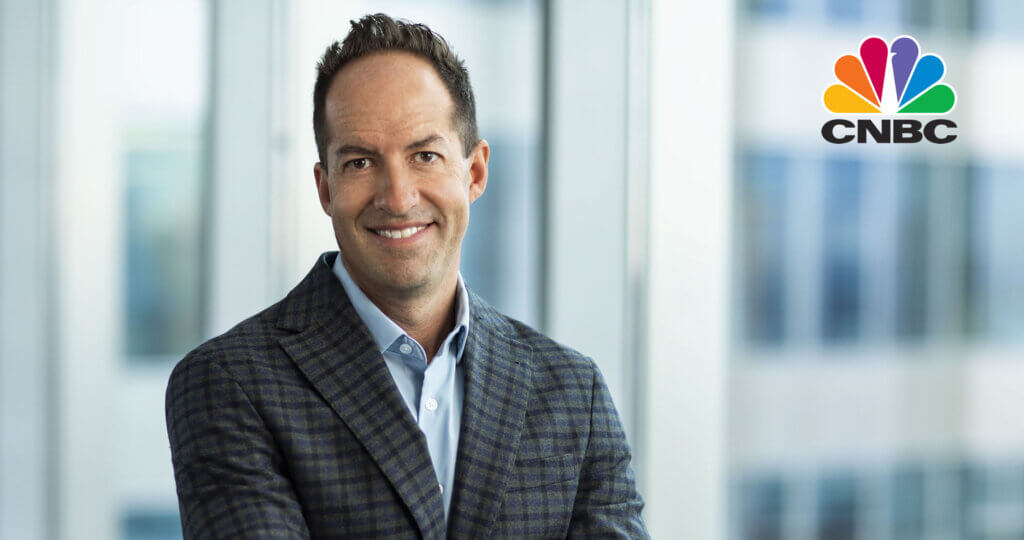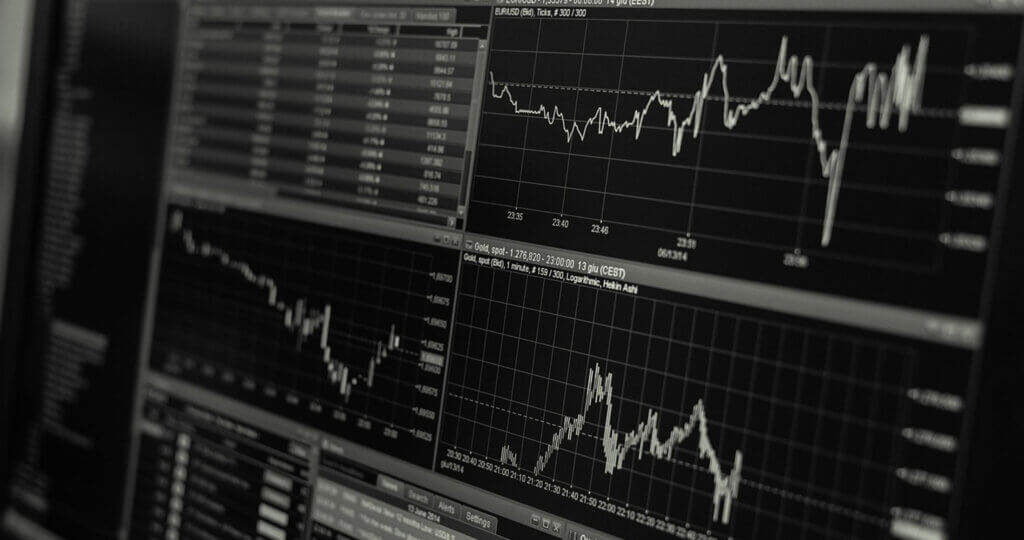I’d like to use this quarter’s commentary to answer three questions we hear frequently about our philosophy and the current market environment.
At Oakmark, we are long-term investors. We attempt to identify growing businesses that are managed to benefit their shareholders. We will purchase stock in those businesses only when priced substantially below our estimate of intrinsic value. After purchase, we patiently wait for the gap between stock price and intrinsic value to close.
How can you still be a bottom-up portfolio manager when the macro environment overwhelms company-specific factors? Don’t you need to develop a macro overlay that guides your overall portfolio construction?
This question is one of my favorites. It implies that we are simpletons for believing that stock picking remains the key to long-term investment success. Many of our competitors, burned by the market collapse in 2008, gave up on bottom-up stock picking. Because the bad economy had overwhelmed their stock picks and led to large losses in their portfolios, they decided to make economic forecasting a more important part of their process. Most concluded that the U.S. recovery was likely to be slower than past recoveries and that Europe’s financial problems were not likely to be fixed quickly. So, despite stocks being at valuation lows we hadn’t seen in decades, they tempered their enthusiasm for equities because of a negative macro overlay.
For a macro point of view to add value in portfolio construction, we believe certain conditions need to be satisfied. First, the view must be non-consensus. If one’s macro view is consistent with the consensus, then it will already be discounted in stock prices and therefore won’t add value. And second, it must prove correct. We don’t think it is all that easy to make correct non-consensus forecasts about the economy. We think it is much easier to find an individual stock that the market thinks is worth less than we do.
The next time someone asks how you can buy stocks without incorporating a view on the economy, ask this: The stock market has more than doubled since the 2009 bottom, is up nearly 50% in the past three years, and is up over 30% in just the past year. How many investors became more positive on the market because of their economic outlook? The only people I hear asking this question are the ones who are shading their expectations more negative. It hasn’t worked for them in the past four years, and we don’t think it will work for them in the future.
We are sticking to our knitting: Buying well-managed, growing businesses when they are cheap and then waiting for the price and value gap to close.
You own a lot of financial services companies, especially banks. Don’t you think that increased regulation will result in lower rates of return than they’ve historically achieved? Aren’t they destined to have little or no revenue growth? In fact, with low growth and heavy regulation, won’t they trade like utility stocks?
From your lips to God’s ears.
Regulatory reform is lowering profitability of some financial products, forcing banks out of some businesses and reducing leverage for most financial service businesses. All of those lead to lower prospective return on equity. We believe there is a partial offset from less competition, which should allow improvement in margins on some products. But all things considered, we agree that increased regulation will detract from financial service companies’ profitability. However, we believe that these companies’ attractive valuations far outweigh their declining profitability. Further, we believe that stock prices are so inexpensive that, even without top-line growth, per-share growth rates can still be satisfactory because most of these companies are shrinking their capitalization through share repurchases.
Before the financial crisis, many banks and other financial services companies earned 15% on their equity, and their stocks were priced north of two times book value. Back then, the downside of being valued like a utility was significant. Today, however, the average utility earns just less than 11% on its equity, sells at about 160% of book value and has a P/E of 17 times. Many of the financials that we own are priced at large discounts to book value and at mid-single digit P/Es on 2014 earnings estimates. If they were instead priced like the average utility, many would sell for more than two times their current price. We’d gladly take that outcome. And as an aside, a company that sells at half of book, earns 8-10% on equity, doesn’t grow and uses all its earnings for share repurchase can reduce its share base by 15 to 20% annually. We’re not claiming that financial services businesses are the highest quality businesses out there. Instead, we’re arguing that their current low multiples of earnings and book value are creating an unusual opportunity.
Why do your funds have higher volatility than the market this year? Are they riskier now than they were in the past? (This question was answered on our website during the quarter.)
The short answer is, “We don’t believe they are riskier,” but I think the explanation is worth thinking about.
Using Oakmark Fund as an example, we looked at how it performed on high volatility days over the 20-year period from its inception in 1991 until the end of 2011. On days when the S&P 500 was either up or down more than 1%, the Oakmark Fund was less volatile than the market 75% of the time. That wasn’t a big surprise. For one thing, the Fund has averaged about 5% in cash, which somewhat lessened the portfolio’s change relative to the stock market change. Further, since we generally owned out-of-favor companies, our equity holdings were not usually the first on traders’ minds when the market was moving.
However, things were quite different in the first half of 2012. On days when the S&P 500 moved more than 1%, the Oakmark Fund was less volatile only 17% of the time. Clearly the shareholder’s observation was correct – the Fund has been more volatile than usual this year.
I think two things explain our higher volatility:
- Frustrated by low yields on bonds, investors searching for income have begun to pay nearly unprecedented prices for stocks that distribute most of their earnings as dividends. Effectively, those stocks – exemplified by electric and telecom utilities – are trading almost as much like bonds as like stocks. In the second quarter, for example, when the S&P 500 was down and bonds were up, telecom and electric utilities together gained about 10% in value. Since Oakmark Fund didn’t own any utilities in the first half of 2012, we had no exposure to a sector that was moving in the opposite direction from most stocks. Exposure to utilities reduced the S&P 500’s volatility, but since Oakmark Fund owned none, we didn’t have a similar reduction in our volatility.
- Investors today are less willing to accept cyclical risk than usual. Not surprisingly, it is the companies with cyclical exposure that seem to have the most day-to-day volatility, swinging up or down based on the words of various European politicians. The financials, technology and industrial stocks react more sharply than do the utilities, health care and consumer staples. Because valuation differentials have seldom been larger, we own a lot more of the former group than we do the latter.
But is daily volatility a good proxy for risk? That depends on how you define the word “risk.” To academics, risk and volatility are synonyms. To many consultants, risk is measured by the variation from an index, called tracking error. We’ve never embraced either of those definitions – we don’t worry about day-to-day volatility, and we’ve never had a goal of tracking any index. To us, risk means losing money. Not just a daily price quote that goes down, but an error in estimating business value such that we want to sell our position despite the price being lower.
Based on our criteria, risk is highly dependent on the price paid for a stock. When a stock is priced at a premium to its business value, risk is high. When the price is at a large discount to value, risk is low. In 1999, when tech stocks were going up most every day and traditional businesses were declining, we believed that investments outside of the technology area were becoming less and less risky while the risk level within technology was growing higher and higher. After a decade of poor performance by technology stocks, we now believe their risk level is much lower. Contrast that to today’s strong-performing utilities sector. Historically, utilities have been slower growth companies and therefore traded at lower P/E multiples than growth companies. That has now flip-flopped. Today, investors are typically paying a slightly higher P/E for utilities than for the rest of the S&P 500. Despite utilities having a relatively predictable business model, the current valuation level makes utility stocks, in our opinion, risky investments.
The Oakmark Fund’s portfolio, as always, is invested in stocks that we believe are selling at large discounts to business values that we expect to grow and that are managed to maximize long-term per-share value. We believe risk reduction is inherent in each of those criteria. We don’t believe our higher day-to-day volatility is anything more than an annoyance. We believe our portfolio is as attractive as it has been in the past and that we have avoided investing in the stocks that we deem to have the highest risk of loss.
A lot has flip-flopped recently. Bonds have historically returned less than stocks, but over the past decade, they have performed much better. Bonds are thought to be lower risk investments; we believe that, at today’s prices, long-term bonds are very risky. Low-growth, high-yield stocks are thought to be among the least risky stocks; we believe, at today’s prices, they are among the most risky stocks. Investors who simply extrapolate recent trends without comparing current price to value run the risk of buying near highs and selling near lows. As investors today are running away from anything that used to be thought of as risky, we believe they are creating a new class of low-risk, high-return opportunities. We believe Oakmark is well-positioned to capitalize on those opportunities.
The Price-Earnings Ratio (“P/E”) is the most common measure of the expensiveness of a stock.
The S&P 500 Index is a broad market-weighted average of U.S. blue-chip companies. This index is unmanaged and investors cannot actually make investments in this index.
The Fund’s portfolio tends to be invested in a relatively small number of stocks. As a result, the appreciation or depreciation of any one security held by the Fund will have a greater impact on the Fund’s net asset value than it would if the Fund invested in a larger number of securities. Although that strategy has the potential to generate attractive returns over time, it also increases the Fund’s volatility.
The discussion of the Funds’ investments and investment strategy (including current investment themes, the portfolio managers’ research and investment process, and portfolio characteristics) represents the Funds’ investments and the views of the portfolio managers and Harris Associates L.P., the Funds’ investment adviser, at the time of this letter, and are subject to change without notice.








